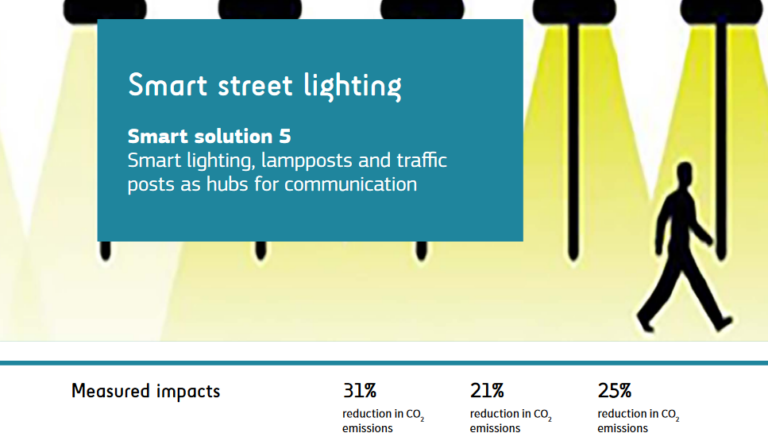Result description
The three technologies delivered energy savings of varying size:
- The sensor controlled LED lighting resulted in up to 31% savings.
- The self-controlled LED street lighting provided up to 21% savings.
- The remotely controlled LED street lighting delivered up to 25% savings.
Lessons Learnt:
The reliability of the data is not always guaranteed. Standardization in various ways could help speed up permitting or reduce the prices for material. It is important to evaluate whether to choose a small or large pilot area (or mock-up) for manageable implementation. The feeling of safety is important when establishing the level of light that satisfies pedestrians. Maintenance of these smart street lights could become more challenging with evolving technologies. This measure could potentially offer many job opportunities
Upscaling & replication potential
Street lighting is generic to all cities and the technical feasibility is very good since all European cities have similar amounts of hours requiring street lighting when viewed on a yearly basis.
Addressing target audiences and expressing needs
- To raise awareness and possibly influence policy
- Other type of Investment
- Public or private funding institutions
- EU and Member State Policy-makers
- Private Investors
Result submitted to Horizon Results Platform by STOCKHOLMS STAD

